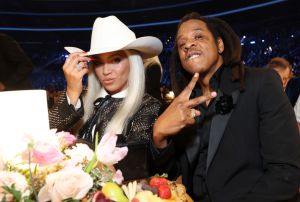
Source: Axelle/Bauer-Griffin / Getty
People With A Particular Disorder Express Their Sentiments
Ever since the horror flick Us hit theaters, Lupita Nyong’o has been getting praise for taking on the role of Adelaide and her scary doppelgänger Red.
However, one community isn’t too pleased with Lupita once she revealed the inspiration for Red’s voice, which has been creeping out audiences everywhere.
In an interview with Variety, Lupita said she pulled from a symptom called spasmodic dysphonia, which is a neurological disorder.
Dr. Andrew Blitzer, a professor of otolaryngology at Columbia University’s medical school, told the New York Post that spasmodic dysphonia is a “symptom of different parts of the brain not working, which prevents a fluid voice.”
Blitzer said SD is a subset of dystonia, which is a general disorder that causes uncontrollable muscle contractions and spasms. The ailment is incurable and rare, affecting around 50,000 people in North America, according to the National Spasmodic Dysphonia Association.
When Lupita revealed that the disorder was inspiration for her scary character in Us, people of the SD community were very critical.
“When I read about it, I was angry; I felt mocked,” said Margot Durkin, a retired educator from Virginia who was diagnosed with SD in 2001.
Durkin told the New York Post:
“I don’t think her mistake was in method acting or in taking something she had heard and developing it into her character…I’m faulting the way she talked about the voice that she took. She took the SD voice and made it sound as if she was demonizing the disability, that she was looking for something creepy and evil.”
Kim Kuman, executive director of the National Spasmodic Dysphonia Association, also wasn’t happy, saying, SD “is not a creepy voice; it’s not a scary voice. It’s a disability that people are living with and shouldn’t be judged upon… For so long, people were told that it’s psychological — and it’s not. It’s neurological. Stress is going to aggravate any health issue.”
To Lupita’s credit, she never told Variety that her aim was to create an evil voice, and she acknowledged that SD can be caused by many things:
“I was inspired by the condition spasmodic dysphonia, which is a condition that comes about from trauma, sometimes emotional, sometimes physical and creates this spasming in your vocal chords that leads to an irregular flow of air. So I studied that. I worked with an ear, nose and throat doctor, a vocal therapist and my dialect coach to make sure I could do it and do it safely.”
Lupita then went on to say that her Red voice was “inspired by the condition, but it’s not an exact replica of the condition.”
Still, folks from the community are still taking the moment to educate people on the disorder.
“It’s a real disability that many people live with,” Durkin said. “And for some of them it is so severe it affects their ability to hold a job. And it affects your social life terribly. At a crowded restaurant or party, people can’t hear you; waiters bring you the wrong order.”
What do you think about Lupita’s choice of inspiration and the SD community’s reaction? Let us know!








Comments
Bossip Comment Policy
Please read our Comment Policy before commenting.